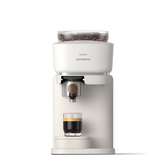History of Coffee
The history of coffee is as rich and complex as the drink itself. It all started in Ethiopia, where coffee was first discovered around the 9th century.
According to legend, a goat herder named Kaldi noticed his goats becoming unusually energetic after eating the berries of a particular tree. After trying the berries himself, Kaldi too felt a surge of energy. This discovery sparked the beginning of coffee’s journey.
From Ethiopia, coffee spread across the Arabian Peninsula, where it became a cultural and religious staple. By the 15th century, coffee was being cultivated and consumed in the Yemeni region of Arabia, particularly in the port city of Mocha, which became synonymous with high-quality coffee. The Ottoman Empire popularized coffee throughout the Middle East. Coffeehouses, known as “qahveh khaneh,” began to pop up in cities, offering a social space where people could gather to drink coffee, chat, and exchange ideas.
Coffee made its way to Europe in the 17th century, brought by Venetian merchants who traded with the Ottoman Empire. Initially met with suspicion due to its dark, bitter brew, coffee was dubbed the "devil's drink" by some clergy. However, Pope Clement VIII reportedly blessed it, declaring it too delightful to be forbidden. It quickly gained popularity. Coffeehouses soon emerged in cities like Venice, Vienna, and London - the first coffeehouse in England opened in 1652. Soon coffeehouses became places of intellectual and political discussion, even earning the nickname “penny universities” because of the enlightening conversations that took place there. By the 17th century, coffee had become a beloved European beverage.
As demand for coffee grew, European colonial powers began establishing coffee plantations in tropical regions such as the Caribbean, South America, and Southeast Asia. This expansion led to the spread of coffee cultivation worldwide. By the 18th century, coffee had become a global commodity, with various regions developing their own distinct methods of growing and brewing.


In the 19th century, the invention of the coffee press and later the drip coffee maker revolutionized the way people brewed coffee at home. At the same time, coffee became an integral part of industrialization, with cafes and coffeehouses serving as gathering spots for workers, intellectuals, and artists alike.
The 20th century brought about the rise of mass-produced coffee brands and instant coffee. But even as coffee became more commercialized, a new wave of coffee culture emerged in the 1980s and 1990s, with a focus on high-quality beans and artisan brewing methods. Specialty coffee shops began to pop up in cities worldwide, offering a more refined and personalized coffee experience. The “third wave” of coffee, which emphasized single-origin beans, sustainability, and direct trade with farmers, took coffee to new heights in terms of quality and innovation.
Today, coffee is more than just a drink—it’s a global industry, an essential part of daily life, and a cultural phenomenon. From its humble beginnings in Ethiopia to its status as one of the most consumed beverages worldwide, coffee has a fascinating history that continues to evolve. Whether you enjoy an espresso, a lungo or a cappuccino - you’re partaking in a centuries-old tradition that has shaped cultures, economies, and social lives around the world.





















